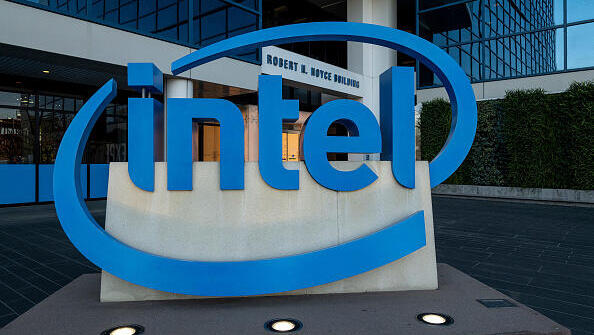
Interim Intel co-CEO: "We want to be the Western provider of leading-edge silicon"
“We’ve made a lot of investment from a capital perspective in Foundry, and we need to start seeing some incremental return on invested capital,” new co-CEO David Zinsner added, speaking two days following the shock departure of outgoing CEO Pat Gelsinger.
David Zinsner, Intel's interim co-CEO, reaffirmed the company’s strategic priorities on Wednesday, emphasizing its ambition to be the “Western provider of leading-edge silicon.” This statement comes during a period of significant change for the struggling chipmaker, following the sudden resignation of CEO Pat Gelsinger earlier this week.
Speaking at the UBS Global Technology Conference on Wednesday, Zinsner addressed concerns about Intel’s direction, emphasizing that its core strategy remains intact. “The board was pretty clear that the core strategy remains intact,” said Zinsner, who previously served as Intel’s CFO for two years. He also highlighted the company’s dual focus on its Intel Foundry Services (IFS) and its internal chip design businesses, known collectively as Intel Products.
Intel has faced mounting pressure to deliver returns on its massive investments in manufacturing. Central to its strategy is the expansion of its foundry business, which offers contract chip manufacturing to external clients. However, Zinsner stressed the importance of synergy between Intel’s foundry services and its internal chip design efforts.
“We still want to be a world-class foundry. We want to be the Western provider of leading-edge silicon to customers. That remains our goal,” Zinsner said. “But we also understand that it's important for the No. 1 customer of Foundry \[Intel Products\] to be successful in order for Foundry to be successful.”
Related articles:
This integrated approach, Zinsner explained, will ensure that Intel can compete effectively in both the design and manufacturing of advanced semiconductors, particularly as geopolitical concerns drive demand for a robust Western supply chain in critical technology sectors.
Gelsinger’s resignation, attributed to dissatisfaction with the pace of Intel’s costly turnaround, has cast a spotlight on the company’s execution challenges. Intel has lagged behind rivals like Taiwan Semiconductor Manufacturing Co. (TSMC) and Nvidia, particularly in the burgeoning field of artificial intelligence.
Zinsner acknowledged the need for improved execution, particularly in chip design. Michelle Johnston Holthaus, Intel’s other interim co-CEO, has been tasked with overseeing the Intel Products group to streamline operations and drive better performance. “There are things that transcend all the business units on the product side that probably were getting sub-optimized,” Zinsner noted. Holthaus’s experience in sales and deep customer relationships were described as key assets for her new role.
Intel’s manufacturing roadmap remains a cornerstone of its turnaround strategy. Naga Chandrasekaran, head of Intel’s foundry manufacturing, noted progress on its 18A advanced node manufacturing process, with chip samples expected in early 2024.
Despite technical milestones, Intel faces a steep uphill battle to regain market leadership. Its stock, which initially rose following Gelsinger’s departure, has since declined amid concerns about the company’s long-term prospects.
Zinsner, however, remains resolute about Intel’s ambitions. “We’ve made a lot of investment from a capital perspective in Foundry, and we need to start seeing some incremental \[return on invested capital\],” he said.
Reuters contributed to this report
